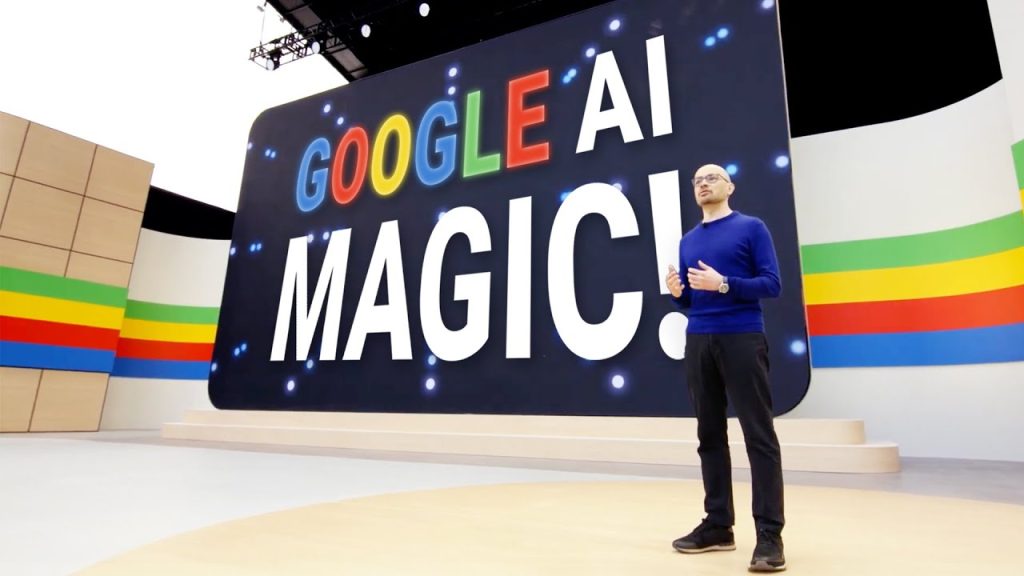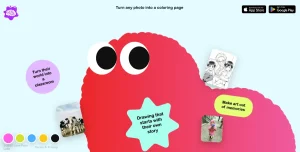Enter the Future with Google’s Project Astra: An AI Revolution

In a world where artificial intelligence is evolving at lightning speed, Google has just unveiled a groundbreaking project that’s set to transform the way we interact with technology. Project Astra, along with its powerful engine Gemini, promises to bring unparalleled convenience and functionality right to your fingertips. But what makes this AI assistant truly revolutionary? Let’s delve into the nuts and bolts of this technological marvel and see how it stacks up against the competition.
Google’s Project Astra: A New Era in AI Assistants
Google recently introduced Project Astra, a groundbreaking AI assistant designed to be by your side at all times. This innovative assistant can identify parts of objects, interpret code, and even keep track of your belongings. It aims to elevate the convenience and functionality of smart assistants to the next level.
Project Astra’s unique ability to remember previous interactions sets it apart. For example, it can recall where you left your glasses at the office. This memory feature is seen as a significant leap forward in the development of AI technology, adding a touch of personalization and utility to daily tasks.
Gemini: The AI That Remembers
The core technology behind Project Astra is Gemini 1.5 Flash AI, which boasts a wide context window with 1 million tokens. This means it can handle large chunks of information, such as entire theses and videos, and even role-play as a committee to challenge you with tough questions.
Gemini’s ability to process huge amounts of data quickly is one of its key strengths. For instance, it can watch long videos and provide insights in a matter of seconds. This makes it an invaluable tool for both educational and professional settings.
Speed and Performance Upgrades
The new Gemini 1.5 Flash AI promises faster processing speeds compared to its predecessors. Early benchmarks suggest it could be nearly twice as fast as GPT-4o, which is already known for its speed. This upgrade ensures that users can get answers almost instantaneously, enhancing productivity.
An update to Gemini’s open model version, called Gemma2, is also in the works. This version will be suitable for running on desktop computers and even smaller devices like smartphones, making advanced AI accessible to more people.
Imagen 3: Advancing text-to-image technology
Google also provided a sneak peek of Imagen 3, their latest text-to-image AI. This tool aims to generate more detailed and accurate images from text descriptions. Text generation remains a challenging area for AI, but Imagen 3 shows promise in overcoming these hurdles.
In addition to generating images, Google is also venturing into text-to-video technology. Their new tool, Veo, can create Full HD videos up to a minute long based on text input. This represents a significant step forward in AI capabilities, offering new creative possibilities for users.
Veo builds on previous Google projects like Phenaki and VideoPoet, integrating lessons learned to improve video quality and coherence. This means that elements like cars and environments will remain consistent throughout the video, providing a more seamless viewing experience.
Gemini’s Integration with Google Services
One of the standout features of Gemini is its integration with Google services like Gmail and Google Sheets. This allows the AI to pull relevant information from emails, such as flight and hotel details, to help plan trips or manage schedules. It can also analyze financial data and visualize profits, making it a versatile assistant.
Gemini’s ability to integrate with various Google services adds a layer of functionality that sets it apart from other AI assistants. It can streamline tasks by bringing together data from different sources, making it easier for users to manage their personal and professional lives.
The Bigger Picture: AI Video Understanding
Google’s advancements in AI are part of a larger trend towards AI video understanding. With tools like Veo and improvements in text-to-image technology, Google aims to make AI more intuitive and capable of handling complex tasks.
The competition in AI technology is fierce, with companies like OpenAI also making significant strides. This competition drives innovation, resulting in better and more advanced tools for consumers. The future of AI looks incredibly promising as companies push the boundaries of what is possible.
As AI technology continues to evolve, consumers can expect to see more integrated and versatile tools that enhance both personal and professional aspects of life. From smart assistants like Project Astra to advanced video generation tools like Veo, the possibilities are endless.
A Glimpse into the Future
While many of these AI advancements are still in development, the potential they hold is enormous. Google continues to push the envelope, offering sneak peeks into technologies that will soon become part of our daily lives.
The integration of AI into various aspects of life, from planning trips to generating videos, showcases the diverse applications of this technology. As these tools become more refined, they will likely become indispensable in various settings.
Google’s Project Astra and its advanced technologies like Gemini and Veo are truly a glimpse into the future of AI. From enhancing daily tasks to creating detailed videos, the potential applications are vast and varied. As AI continues to evolve, the convenience and capabilities it offers will become increasingly integral to everyday life.
These advancements not only showcase Google’s innovative capabilities but also set the stage for even more exciting developments in the world of artificial intelligence. The future looks bright as these tools become more refined and widely available.





